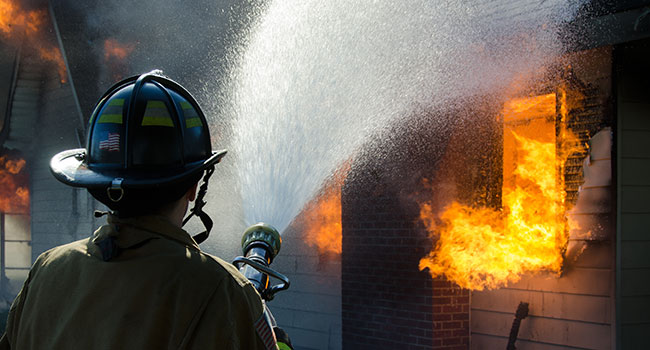The 5-Minute Rule for Dry Star Restoration
Table of Contents7 Simple Techniques For Dry Star Restoration6 Easy Facts About Dry Star Restoration DescribedHow Dry Star Restoration can Save You Time, Stress, and Money.8 Easy Facts About Dry Star Restoration ExplainedThe smart Trick of Dry Star Restoration That Nobody is Talking About
Within mins, the kitchen area was ablaze, creating extensive damage and calling for months of repair work. Specifically in wintertime, home heating units are a common fire hazard. Malfunctioning circuitry or positioning heating systems too close to flammable products like drapes can fire up a fire. Constantly maintain heaters away from anything that can burn and evaluate them frequently.
Products like electric motor oil or cleaning fluids can ignite under particular problems. Constantly store these things properly and away from warmth resources. water damage restoration mesa. Data: According to the National Fire Protection Association, family chemicals are responsible for a noteworthy portion of home fires yearly. By knowing these common causes, you can take steps to make your home much safer.
6 Easy Facts About Dry Star Restoration Described

Key problems consist of: Water Breach: Water can permeate right into wall surfaces, floors, and furniture. This can compromise the structural stability of your home. Form Development: If water is moist promptly, mold and mildew can begin to expand within 24-48 hours. Mold and mildew can create health issues and further damage to your residential or commercial property. Structural Weakening: Water can deteriorate wood frameworks and trigger steel parts to rust, making your home dangerous.
It's critical to attend to all these elements to totally recover your home. Next off, we will certainly study the steps associated with the fire damage remediation process. Fire reconstruction is the procedure of cleansing, repairing, and restoring a home that has been damaged by fire. The objective is to return the building to its pre-loss problem, implying it looks and functions as it did prior to the fire.
Unknown Facts About Dry Star Restoration
Particles Removal and Demolition: Damaged products are securely removed, and any kind of hazardous compounds like asbestos are taken care of appropriately. Cleansing and Purification: Soot and smoke odors are removed using specific devices and therapies. Reconstruction and Fixes: Finally, the residential property is reconstructed and recovered, including architectural repair services and indoor reconstruction - fire damage restoration companies. Fire damage encompasses several kinds of injury to a residential property: Physical Damage: This consists of charring, smudging, and disintegration of products straight influenced by the fire.
Water Damage: Water utilized to extinguish the fire can cause architectural weakening and mold development otherwise correctly handled. Fire repair specialists use specialized methods and devices to resolve all these kinds of damages, making sure the residential or commercial property is safe and livable once more. Next off, we will certainly dive pop over to this site into the actions entailed in the fire damage reconstruction procedure.
From modern water extraction equipment to specialized devices for smoke and soot removal, we have actually the sources required to recover your residential or commercial property to its pre-loss problem. Our techniques are designed to be detailed and reliable, lessening additional damage and quickening the healing process. Our team contains accredited specialists who are professionals in fire damages reconstruction.
Some Known Details About Dry Star Restoration
Their knowledge ensures that every work is done right, giving you with tranquility of mind throughout a tough time. If you require fire damage restoration services, do not think twice to contact us. We're below to assist you restore your home and your life after the fire. Last modified on 15th of July 2024.
(https://hubpages.com/@dryst4rrstrtn)If there's a fire, smoke makes sure to follow. While the fire's smoke is made up of aspects that make your home dangerous to be in, the damages smoke leaves does not quit there. Smoke will drift to seemingly every component of your home, sticking to furnishings, decoration, curtains, wall surfaces, ceilings, floors, and more.
The water will saturate into the charred materials and spread out to various other areas of the home untouched by the fire. If left unattended or missed throughout fire damages restoration, the water damages will only intensify with time and can bring about mold and mildew development, security issues for your home's structure, and undesirable appearances around your room, including deformed floor covering, peeling off paint, and noticeable discolorations.
Dry Star Restoration Fundamentals Explained
Water mitigation is usually the initial step of the fire, smoke, and water damage remediation procedure after a damage control has actually been finished. This attends to the water damage head-on and consists of actions to stop additional issues for your area before, during, and after restoration. Assessment and damage control to assess the degree of water damageIsolation of water damages to influenced areas to prohibit water from infecting dry areasInspection of your home's structure for structural stabilityExtraction of any type of standing water from the propertyStructural drying out with commercial-grade equipmentSite cleaning that will certainly eliminate particles, pack out salvageable material for repair, and give way for repair servicesWe'll additionally finish added damages mitigation by boarding up broken home windows and doors, using tarpaulins to openings in roofings, and finishing various other steps to avoid extra damage and dangers to your home while the repair services are occurring.
Many terms and summaries utilized by water and fire damage reconstruction specialists are relatively obvious. Nonetheless, the checklist of terms listed below should be of help when you're communicating with the company you have actually employed. Any type of action required to stop the growth and spreading of fungus, mold, mold, and spores. This can consist of using solvents or chemicals as additives or barriers on building products to avoid fungi development.